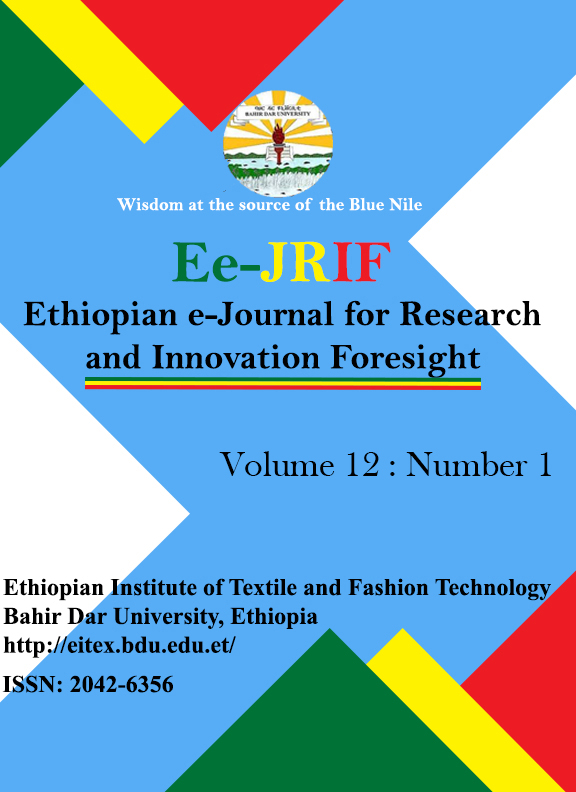APPLICATION OF ALOEVERA GEL AS A THICKENER FOR REACTIVE PRINTING OF COTTON FABRIC
Abstract
Reactive dyes are most popular for printing of cotton. The conventional thickeners such as starch, CMC, guar gum etc. though commonly used for printing are not suitable for printing cotton with reactive dyes. This is due to the fact that these thickeners contain free -OH groups which can react with the reactive dye under printing conditions and thus there will be loss of color value as well as the dye thickener reaction product may be insoluble in water giving harsh feel to the printed fabric. For this reason, the thickener should be free from -OH groups. Sodium alginate is the only thickener which meets this requirement. Therefore, sodium alginate is most popular for printing cotton with reactive dyes. However, in Ethiopia there was be limitations in the use of sodium alginate thickener such as it is imported product therefore its availability is limited and expensive. In order to overcome these problems, there is need to find alternative thickener for reactive dye printing. Aloe Vera is a natural product and available in plenty in Ethiopia. It contains a gel which can be used as a thickener. The aim of this paper is using of alovera gel as thickener for printing of cotton fabric with reactive dyes and using aloe Vera as a substitute of sodium alginate thickener was very economical and since aloevera is a wild plant in Ethiopia. Cotton fabric, thickener, dye stuffs and chemicals (reactive dye, Urea (NH2CONH2), Sodium carbonate (Na2CO3), Wetting agent (Soap) and water) were used with in different concentrations throughout the study. The results indicate that the overall fastness properties of the printed cotton fabric samples showed that using combination of 20-gram aloevera gel and 2.5-gram sodium alginate as a thickening agent yielded the best improvement in the handling, sharpness and fastness properties of the printed samples
Copyright (c) 2021 Eyasu Ferede Woldesamual

This work is licensed under a Creative Commons Attribution-NonCommercial 4.0 International License.

